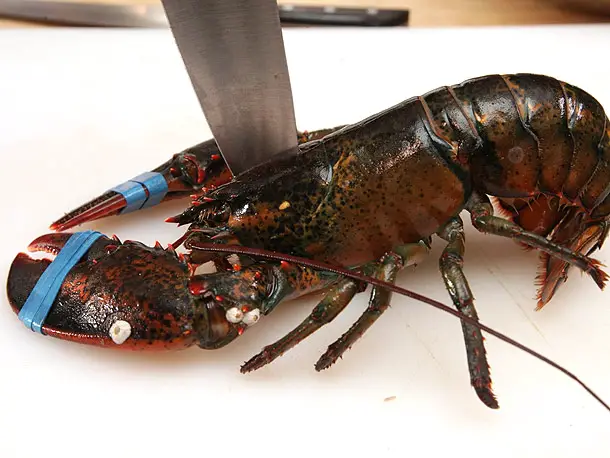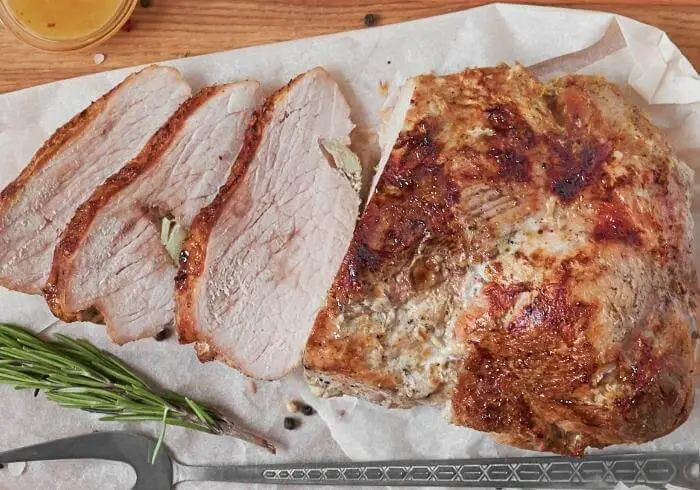Lobster is a delicacy that can be enjoyed in many forms, including steamed, boiled, and grilled. However, cooking a dead lobster raises ethical, biological, and food safety concerns. The purpose of this article is to discuss the controversy surrounding cooking dead lobsters and whether it’s okay to do so.
The Biology of a Lobster
It’s important to understand the biology of a lobster before determining whether it’s acceptable to cook it after its death. A lobster has an exoskeleton made of chitin and calcium carbonate that protects its internal organs. The tail contains most of the meat and is covered by a hard shell.
When a lobster dies, rigor mortis sets in within hours, causing its muscles to become stiff and difficult to manipulate. As with any living organism, after death bacteria start feeding on organic matter which could lead to foodborne illnesses.
If a lobster has been out of water for too long before being cooked, bacterial growth can continue at risky speeds at temperatures between 40˚F (4˚C) and 140˚F (60˚C).
For these reasons alone live or recently deceased lobsters are always recommended as the best for consumption to avoid potential health risks.
Food Safety Concerns
Cooking dead seafood such as lobsters poses significant health risks since bacteria breeds rapidly on their flesh once they die. Cooking does not kill all bacteria or neutralize toxins produced by certain types of bacteria such as Vibrio virus from deceased seafood.
As such advisories issued by government entities recommend avoiding eating raw crustaceans (such as sashimi or sushi) altogether due to the risk of food poisoning.
To prevent any chance of inciting illness through contaminated foods, when preparing live or recently killed lobsters follow some simple guidelines:
- Keep them alive until just prior to cooking: Purchase live lobsters close enough time-wise so you can cook them as soon as possible
- Keep the lobsters refrigerated during transport and before cooking.
- Do a swim test: Take the lobster and place it in salted water, if it remains motionless for an extended period, it is likely that this is a dead or compromised lobster not suitable for cooking.
- Do Not Stream Lobsters to death: Inhumane practices may kill the Lobsters faster than boiling them alive (which many say they can’t feel and which kills them almost instantly). The most humane way to kill a live lobster is to quickly sever its head or pierce its brain using a sharp tool such as a chef’s knife. There are many video guides on humane lobster killing, to assist any novice cooks.
Legal Considerations
The US FDA requires that all shellfish—crabs, shrimp, lobster, crawfish—be cooked per established guidelines. This rule protects consumers from harmful bacteria found in raw shellfish like Vibrio virus associated with eating raw seafood.
This means that restaurants have an obligation to both themselves and their patrons not to serve dead lobsters, since they could be held liable for food poisoning outbreaks traced back to their establishments.
Some states might also have additional regulations regarding the commerce of live lobsters for consumption. It’s advisable therefore before ordering or purchasing lobsters in states where you are unfamiliar with rules governing its sale or preparation for use in food service.
Cultural perspectives
Cultural attitudes towards seafood consumption differ according to tradition or religion across the world. Some groups totally refrain from any seafood while others prohibit specific interactions with living creatures under certain conditions (e.g., only acceptable if cooked alive).
In certain Asian cultures eating live seafood is considered a type of delicacy but largely viewed by Western countries as unacceptable due to cruelty concerns related to keeping animals alive until they are cooked; they’re often kept in artificial dry environments until purchased – making them sickly looking.
To address consumer trends and discomfort with live seafood, restaurants nowadays offer pre-severed lobster meat served in a variety of dishes thus circumventing any ethical issues.
Alternatives To Cooking Dead Lobster
If the drawbacks to cooking deceased lobsters concerns are giving you pause, there are alternative recipes to consider such as using imitation crab, shrimp or seafood sausages. With the advances in plant-based protein products’ avaiability, using these alternatives to actual seafood dishes is a good option for those who would prefer not having dead flesh on their plate.
Don’t fancy faux meat? Consider consuming only live or freshly killed lobster, as that will eliminate many food safety and ethical issues related with consuming dead lobster entirely.
Social Responsibility
Social responsibility is an important factor we should each consider when dining. By choosing eco-friendlier dining options such as wild-caught or farmed fish from sustainable farms like MSC certified sources or choosing restaurants that follow a “zero-waste” policy where possible can help conserve our aquatic resources by promoting conservation of both natural habitat and habitats that fisheries rely on for food sources. Elevating awareness of responsible social practices among others helps drive change toward more eco-conscious approaches toward marine conservation.
Conclusion
So, is it okay to cook a dead lobster? Regardless of personal opinions on the morality of cooking deceased lobsters, this practice presents significant health risks due to bacterial growth after death. Therefore chefs who venture down the path must take careful consideration regarding safe best practice guidelines before they begin using them for culinary prep.
For consumers who are concerned about ethics or animal welfare but still wish to enjoy seafood there are plenty of alternatives available. Ultimately anyone cognizant about proper food safety guidelines and ethical issues should opt towards responsibly caught and humanely harvested species avoiding any parties responsible for contributing towards unsustainable fishing methods.
Q&A
- Q: Can you eat a dead lobster if you cook it? A: Technically, yes, but it’s not advisable. Once a lobster dies, harmful bacteria start to grow rapidly in its body, which can make people sick even after cooking it.
- Q: Are there any instances where cooking a dead lobster is acceptable? A: In some cultures, consuming dead animals is part of their cuisine or tradition. However, in general, it’s better to err on the side of caution and avoid cooking dead lobsters.
- Q: How do I know if a lobster is alive or dead before cooking? A: Look for signs of life such as movement or responding to stimuli like touching its antennae or tail. If the lobster is unresponsive and appears frozen or limp, it’s most likely dead and should be discarded.
- Q: What are the risks of eating a cooked dead lobster? A: Eating a cooked dead lobster can lead to food poisoning symptoms such as nausea, vomiting, diarrhea, and abdominal cramps. Additionally, consuming toxins from bacteria found in the deceased crustacean can cause more severe illnesses that require medical attention.




